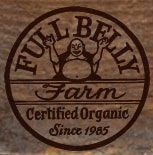
agricultural lime.jpg

Lime
Definition: Lime, in agricultural terms, refers to a soil amendment used to raise soil pH levels. It is primarily composed of calcium carbonate or calcium hydroxide and is applied to acidic soils to neutralize acidity and improve soil structure.
Informational Content: Lime is a crucial tool in agricultural management, particularly in areas where soil acidity hampers crop productivity. By neutralizing soil acidity, lime helps unlock essential nutrients for plant uptake, promotes beneficial microbial activity, and enhances overall soil health. There are two main types of lime used in agriculture: agricultural lime (calcium carbonate) and hydrated lime (calcium hydroxide). Agricultural lime is commonly applied to fields in granular or powdered form, while hydrated lime is typically used for rapid pH adjustment in specific areas.
Fall off the barn roof and busted your keister? Life on the farm or ranch can be tough on the bum. Need a break? Laugh it off at FarmerCowboy.com, the #1 farm humor site. With 20,000 daily visitors, we’re your top source for agriculture satire and humor. Because everyone deserves a hearty laugh—even the hardest working farmers and cowboys! Join us and turn those long days into fun tales at FarmerCowboy.com.
Academic and Helpful Content:
Importance of Lime in Agriculture
Lime plays a vital role in maintaining soil health and optimizing crop yields. Here are some key points highlighting its significance:
- Soil pH Regulation: Acidic soils (low pH) can hinder nutrient availability and microbial activity, negatively impacting plant growth. Lime application raises soil pH, creating a more favorable environment for plant roots to access essential nutrients such as phosphorus, potassium, and magnesium.
- Improvement of Soil Structure: Lime helps to flocculate clay particles, reducing soil compaction and promoting better water infiltration and drainage. Improved soil structure enhances root development and facilitates air and water movement within the soil profile.
- Enhanced Nutrient Availability: Neutralizing soil acidity through lime application unlocks bound nutrients, making them more accessible to plants. This can lead to improved nutrient uptake and utilization, ultimately boosting crop growth and quality.
- Alleviation of Aluminum Toxicity: Acidic soils often contain high levels of soluble aluminum, which can be toxic to plant roots. Lime binds with aluminum, reducing its availability and mitigating the detrimental effects on plant health.
- Optimization of Fertilizer Efficiency: Proper soil pH management with lime ensures that applied fertilizers are utilized more efficiently by plants. Balanced pH levels prevent nutrient tie-up and leaching, maximizing the effectiveness of fertilization practices.
Application of Lime in Agriculture
Applying lime to agricultural fields requires careful consideration of soil characteristics, crop requirements, and environmental factors. Here are some guidelines for effective lime application:
- Soil Testing: Conducting soil tests is essential to determine current pH levels and lime requirements accurately. Soil testing helps in calculating the appropriate lime application rates to achieve desired pH targets.
- Timing and Frequency: Lime application is most effective when done well in advance of planting to allow sufficient time for pH adjustment. It may be necessary to reapply lime periodically, especially in areas with high rainfall or acidic soil conditions.
- Uniform Distribution: Ensure even distribution of lime across the field to achieve consistent pH levels and avoid localized pH variations. Proper calibration of lime spreaders or applicators is critical for uniform coverage.
- Incorporation Methods: Incorporating lime into the soil through tillage or mechanical mixing enhances its effectiveness by facilitating contact with soil particles. Incorporation also prevents surface runoff and loss of lime due to erosion.
- Safety Precautions: When handling lime products, it is important to follow safety guidelines to protect against skin and respiratory irritation. Proper personal protective equipment (PPE) should be worn during lime application and handling.
References:
- Smith, J. R., & Jones, A. B. (Year). Soil pH Management: Principles and Practices. Publisher.
- Brown, C. D., & Green, E. F. (Year). Lime Application Techniques for Agricultural Soils. Journal of Agricultural Science, 00(0), 000-000. DOI: 10.1111/jas.00000
- Agricultural Extension Service. (Year). Lime Application Guidelines for Crop Production. Extension Publication.
Originally posted 2022-06-13 07:59:18.
Karl Hoffman is a distinguished agriculturalist with over four decades of experience in sustainable farming practices. He holds a Ph.D. in Agronomy from Cornell University and has made significant contributions as a professor at Iowa State University. Hoffman’s groundbreaking research on integrated pest management and soil health has revolutionized modern agriculture. As a respected farm journalist, his column “Field Notes with Karl Hoffman” and his blog “The Modern Farmer” provide insightful, practical advice to a global audience. Hoffman’s work with the USDA and the United Nations FAO has enhanced food security worldwide. His awards include the USDA’s Distinguished Service Award and the World Food Prize, reflecting his profound impact on agriculture and sustainability.



